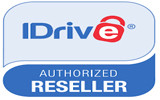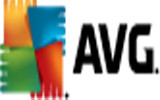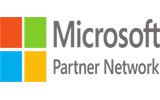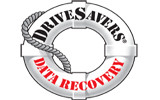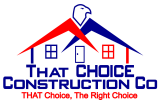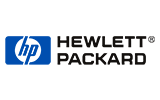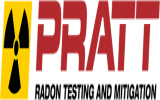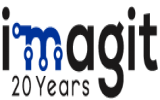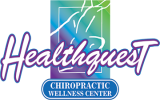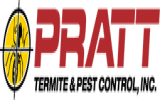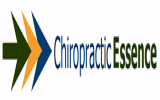
How to Do On-Page SEO: The Complete 5W1H Guide for 2025
- By: Admin
- Computer Tips & Tricks/ Software/ Search Engine Optimization (SEO)
- 0 comment
How to Do On-Page SEO: The Complete 5W1H Guide for 2025
On-page SEO forms the foundation of successful search engine optimization. When done correctly, it signals to search engines that your content deserves higher rankings while providing users with an exceptional browsing experience.
This comprehensive guide uses the 5W1H framework to break down everything you need to know about on-page SEO optimization.
What is On-Page SEO?
On-page SEO refers to optimization techniques applied directly to your website pages to improve their search engine rankings. Unlike off-page SEO, which focuses on external signals like backlinks, on-page SEO involves elements you control entirely.
Key on-page SEO components include:
- Title tags and meta descriptions
- Header tags (H1, H2, H3)
- Content quality and keyword optimization
- URL structure
- Internal linking
- Image optimization
- Page loading speed
- Mobile responsiveness
- Schema markup
These elements work together to help search engines understand your content's relevance and value to users searching for specific topics.
Why On-Page SEO Matters
Effective on-page SEO delivers multiple benefits that directly impact your website's success:
Improved Search Rankings: Well-optimized pages rank higher in search results, increasing organic visibility and traffic potential.
Better User Experience: On-page optimization enhances readability, navigation, and page performance, keeping visitors engaged longer.
Higher Click-Through Rates: Compelling title tags and meta descriptions encourage more users to click your listings in search results.
Increased Conversions: Users who find exactly what they're searching for are more likely to complete desired actions on your website.
Cost-Effective Marketing: Unlike paid advertising, organic traffic generated through on-page SEO continues flowing without ongoing costs.
Search engines prioritize websites that provide value to users. On-page SEO ensures your content meets both search engine criteria and user expectations.
When to Implement On-Page SEO
On-page SEO should be implemented at multiple stages of your content lifecycle:
During Content Planning: Research target keywords and plan content structure before writing begins.
Throughout Content Creation: Optimize elements like title tags, headers, and keyword placement while creating content.
Before Publishing: Complete final optimizations including meta descriptions, alt text, and internal links.
After Publication: Monitor performance and make adjustments based on search console data and user behavior metrics.
During Content Updates: Refresh and re-optimize existing content to maintain relevance and improve performance.
Regular on-page SEO audits should occur quarterly to identify optimization opportunities and address technical issues that could impact rankings.
Where On-Page SEO Elements Appear
Understanding where optimization elements appear helps ensure comprehensive coverage:
HTML Head Section:
- Title tags (displayed in search results and browser tabs)
- Meta descriptions (shown in search result snippets)
- Schema markup (provides context to search engines)
Page Content:
- H1 tags (main page heading)
- H2-H6 subheadings (content structure)
- Body text with strategic keyword placement
- Internal links to related pages
Images:
- Alt text descriptions
- Descriptive file names
- Proper compression and sizing
URL Structure:
- Clean, descriptive URLs
- Breadcrumb navigation
- Canonical tags for duplicate content issues
Each location serves specific purposes in communicating your page's value to both users and search engines.
Who Benefits from On-Page SEO
On-page SEO optimization benefits multiple stakeholders:
Website Owners gain increased organic traffic, better search visibility, and improved conversion rates without ongoing advertising costs.
Content Creators see their work reach larger audiences and achieve better engagement metrics through improved discoverability.
Digital Marketers can demonstrate measurable ROI through organic traffic growth and enhanced campaign performance.
Users enjoy better website experiences with faster loading times, relevant content, and easier navigation.
Search Engines can more accurately understand and rank content, improving their ability to serve relevant results to users.
Small businesses particularly benefit from on-page SEO as it levels the playing field against larger competitors with bigger advertising budgets.
How to Implement On-Page SEO
Step 1: Keyword Research and Planning
Start by identifying target keywords that align with user search intent. Use tools like Google Keyword Planner, Ubersuggest, or Answer the Public to find relevant terms your audience searches for.
Focus on primary keywords with good search volume and manageable competition. Include supporting secondary keywords that provide context and capture long-tail search queries.
Step 2: Optimize Title Tags
Create compelling title tags that include your primary keyword near the beginning. Keep titles under 60 characters to prevent truncation in search results.
Write titles that accurately describe page content while encouraging clicks. Avoid keyword stuffing and create unique titles for every page.
Step 3: Craft Effective Meta Descriptions
Write meta descriptions between 150-160 characters that summarize page content and include target keywords naturally. Think of these as mini advertisements that convince users to click your listing.
Include calls-to-action and unique value propositions that differentiate your content from competitors.
Step 4: Structure Content with Headers
Use H1 tags for main page headings and include your primary keyword when natural. Break content into logical sections using H2-H6 subheadings that incorporate related keywords.
This hierarchy helps search engines understand content organization while making it easier for users to scan and navigate.
Step 5: Create High-Quality Content
Develop comprehensive, valuable content that thoroughly addresses user search intent. Aim for depth over length, but ensure you cover topics completely.
Incorporate target keywords naturally throughout the content without sacrificing readability. Use synonyms and related terms to provide context and avoid over-optimization.
Step 6: Optimize Images
Add descriptive alt text to all images, including target keywords when relevant. Use descriptive file names instead of generic terms like "image1.jpg."
Compress images to improve page loading speed while maintaining visual quality. Consider using next-generation formats like WebP when possible.
Step 7: Improve Internal Linking
Link to relevant pages within your website using descriptive anchor text. This helps distribute page authority and keeps users engaged with your content longer.
Create topic clusters by linking related content together, establishing your expertise in specific subject areas.
Step 8: Ensure Technical Optimization
Create clean, descriptive URLs that include target keywords when appropriate. Implement SSL certificates and ensure pages load quickly on both desktop and mobile devices.
Add schema markup to help search engines understand your content better and potentially earn rich snippets in search results.
Measuring On-Page SEO Success
Track key performance indicators to measure optimization effectiveness:
- Organic traffic growth
- Search engine rankings for target keywords
- Click-through rates from search results
- Average session duration and bounce rates
- Conversion rates from organic traffic
Use Google Search Console and Google Analytics to monitor these metrics and identify areas for improvement.
Start Optimizing Your On-Page SEO Today
On-page SEO provides the foundation for search engine success. By systematically implementing these techniques across your website, you'll create content that both search engines and users love.
Begin with your most important pages and gradually optimize your entire website. Consistency and attention to detail will deliver long-term organic traffic growth and improved search visibility.
Ready to boost your search rankings? Start implementing these on-page SEO techniques today and watch your organic traffic soar.
Word Count: 1,198 words



